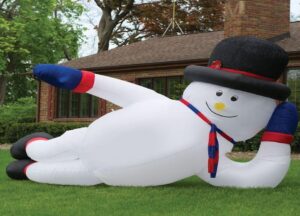Know everything about how to string a bow
There are many approaches to make a string for a traditional bow. You can honestly get a bit of nylon string or 550 paracords that could be a little longer than your bow, carve a few grooves close to the guidelines of your bow, and attach the string.
What’s the trouble with that?
Properly, consider the activity of a bowstring: to assist cast an arrow as speedy, correct, and safe as possible.
It might not appear to be it, however, a nylon string is exceptionally heavy. A heavy string way that our arrow goes to be solid tons slower than if we were using a mild string.
Flight shooters (bowyers that shoot arrows inside the range of 3 hundred-four hundred yards!), use ultra light – and consequently weaker – strings. We don’t want to head that far, as that may compromise the protection of our bow. Learn how to string a bow
Our intention is to create a string this is lightweight, however strong. The traditional bowstring changed into crafted from sinew (animal tendon) or animal intestines. Herbal fibers had been also used, but they may be no longer as strong and can take many hours to make.
The modern-day cloth of choice is a waxed polyester string: Dacron B-50. It comes in huge spools and is about the diameter of thick dental floss. Relying on the power of the bow, you’ll need to use 12-sixteen strands of Dacron B-50. For a bow that attracts 50 kilos, I exploit 14 strands.
Here’s how to make a bowstring. Installation of a “jig” for measuring how long to make your bowstring. Pound two nails right into a board spread out the length of your bow PLUS 18 inches. Then with one spool of Dacron, wrap across the nails till you’ve got 7 strands. Reduce both ends.
Making String Grooves
You might be thinking about the way to attach your freshly minted string for your bow; you need to create string grooves near the bow hints. String grooves ought to be just deep enough that your string will rest on without falling out of the groove. The largest project is to get these grooves to be symmetrical, as you may want to make one on each side of your limb pointers.
On the returned of your bow, make a mark half of” down from the end. At the belly, make a mark 3/4” down from the end. Repeat on the opposite aspect AND on the opposite tip. Make sure that the lower stop is at the stomach side.
You may use a knife to carve the grooves, however, my favored tool is a 1/eight” chain noticed document. Pass slowly and make certain that the lowest of every groove matches the other side.
To complete the groove, take someone hundred grit sandpaper and spherical off the sharp edges of your grooves. This can save your string from being damaged from the wear and tear and tear of stringing and unstringing your bow.
Tying a String in your Bow
Closing, we want to tie the string in your bow. One cease is straightforward: really location your Flemish loops into the groove. Best!
Use a wood hitch for the opposite cease. The timber hitch is an excellent knot. In case you use the bow drill fireplace starting technique, this is a superb knot to apply in your bow.







